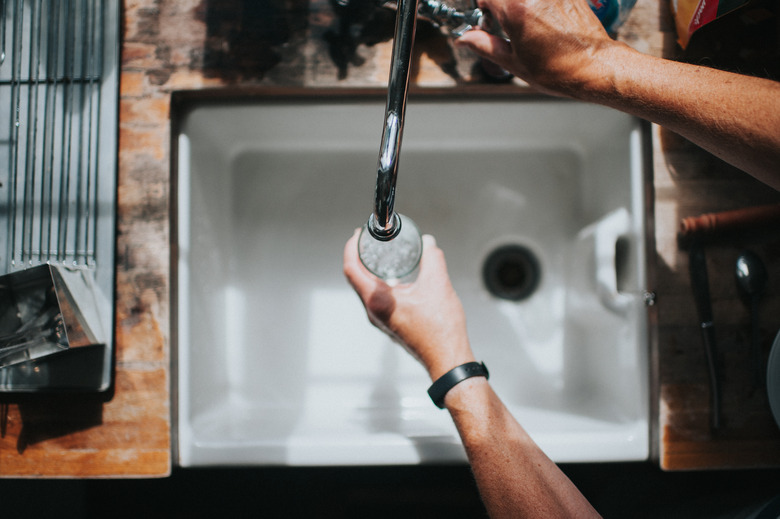How To Remove Sediment From Faucet
We may receive a commission on purchases made from links.
When the water won't flow from the faucet or dribbles out without any gusto, there may be a buildup of dirt and minerals that has clogged the screen inside the tip of the faucet.
If the bathroom faucet is clogged or the kitchen fixture sputters at each turn, then sediment could be to blame. Whether it's the kitchen or bathroom faucet, clogged fixtures caused by sediment can be a pain to deal with. But it doesn't necessarily mean you need to buy an entire new fixture and replace the clogged parts.
Preparing to Fix a Faucet
Preparing to Fix a Faucet
There are many types of faucets. You first need to figure out what type of faucet you are attempting to fix. There are a few types of sink faucets, including single handle ball faucet, ceramic disk and cartridge.
Once you know the type of fixture you have, removing sediment from a faucet can be a quick and easy fix. Have all you need in place so that you can repair and clean the fixture, then move on with your day.
Before you begin, place a towel or other type of cloth to cover the sink's drain hole. This ensures that you won't lose any small parts down the deep drain. Gather a flathead screwdriver, vinegar and steel wool.
Be prepared to make a trip and buy a new screen, or take the cartridge or O-ring with you for those types of filters.
Basic Sediment Removal for a Faucet
Basic Sediment Removal for a Faucet
If, with a single handle kitchen faucet, no water is flowing, then it more than likely has a clogged screen. One of the simplest faucets to fix is the single handle ball faucet. If the faucet has a spray hose attached, then it should be checked, as well. If the spray hose works just fine, then the problem with the faucet is more than likely a clogged screen or aerator.
When the faucet flow is impeded, the first thing to do is to check the aerator. This is the small screw-on connection that can be found at the faucet's spout. Remove the aerator and place it in a bath of vinegar, then sprinkle baking soda over the top.
Scrub out the aerator and replace the parts. If the screen is broken, switch it out for a new one. If the water is still slow on arrival, then you may need to check the plumbing.
Kitchen Faucet Cartridge Replacement
Kitchen Faucet Cartridge Replacement
Two-handle faucet or a fixture that has handles that turn 90 degrees more you than likely have a cartridge or compression faucet. Leaks in these types of faucets are typically caused by a worn-out cartridge or O-ring.
If you have a kitchen faucet that uses a cartridge, then you should check the make and the model of the sink's feature and look up the manual online. It should only take a few hours, but will require some tools.
Installing a kitchen faucet cartridge replacement can be done in a few easy steps. First, turn off the water at the shut off valve located under the sink. Then, open both and allow water to release any residual liquid. Afterward, pry off the handle cap with a small flat screwdriver. Remove the screw from the handle and lift the handle to remove the assembly.
Take off the plastic retaining nut with water pliers and lift the faucet spout out. Remove the retaining clip with needle nose pliers and take out the O-ring or cartridge. Replace the cartridge and check all the O-rings before returning all of the parts to their place.
